Contents
- What foods contain the most vitamin E?
- Daily Value of Vitamin E for Women, Men and Children
- Vitamin E benefits
- What does a lack of vitamin E lead to?
- Is overdose possible?
- Indications for use
- How to take vitamin E correctly?
- How to increase the absorption and effectiveness of vitamin E?
- How to keep it in products?
- Precautions and contraindications

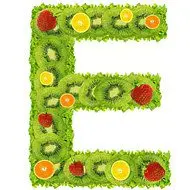
Vitamin E is a fat-soluble vitamin. Few people know that it exists in several types of tocopherols and tocotrienol forms (alpha, beta, gamma and delta tocopherol and alpha, beta, gamma and delta tocotrienol). Alpha tocopherol is the most common form found in supplements and, along with gamma tocopherol, is found in foods.
Vitamin E is one of the most powerful antioxidants. It inhibits the action of free radicals. These compounds are reactive oxygen species capable of damaging healthy cells. The multifaceted action of vitamin E supports the health of the cardiovascular system, eyes, nerve fibers, and skin. With its help, the formation of the genetic chain occurs. Vitamin E prevents age-related changes, protects against negative external factors, thereby prolonging a person’s youth.
What foods contain the most vitamin E?
Vitamin E is found most of all in vegetable oils, especially in wheat germ oil, sunflower, almond. Immediately after oils comes sunflower seeds. Despite the fact that various oils are the record holders, no one will drink 100 ml of oil (therefore, the calculation of oil is 1 tablespoon), at the same time eating 43 g of seeds to get 100% of the daily requirement is quite simple.
 Purified: 35,2 mg
Purified: 35,2 mg 25,6 mg
25,6 mg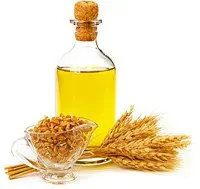 1 Art. spoon: 22,4 mg
1 Art. spoon: 22,4 mg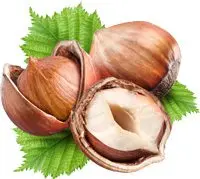 15,3 mg
15,3 mg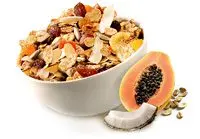 9,8 mg
9,8 mg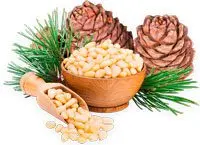 Purified: 9,3 mg
Purified: 9,3 mg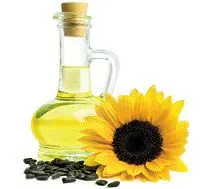 1 Art. spoon: 6,2 mg
1 Art. spoon: 6,2 mg 1 tablespoon: 5,9 mg
1 tablespoon: 5,9 mg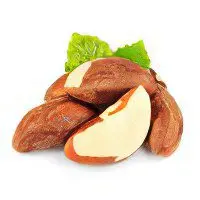 5,7 mg
5,7 mg Fried: 4,9 mg
Fried: 4,9 mg 4,3 mg
4,3 mg 3,8 mg
3,8 mg 2,8 mg
2,8 mg Fried: 2,2 mg
Fried: 2,2 mg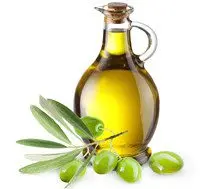 1 Art. spoon: 2,2 mg
1 Art. spoon: 2,2 mg+ 15 more foods rich in vitamin E (100 g) | |||||
Mackerel | 2.4 mg | Sesame | 1,7 mg | Pumpkin | 1,0 mg |
Pumpkin seeds | 2,2 mg | Kiwi | 1,5 mg | Carrots | 1,0 mg |
Avocado | 2,1 mg | Broccoli | 1,4 mg | Chicken egg | 1,0 mg |
Spinach | 2,0 mg | Cranberries | 1,3 mg | Cashew | 0,9 mg |
Herring | 1,7 mg | Blackberry | 1,2 mg | Apricots | 0,9 mg |
View the entire table of 300+ products ➤
Daily Value of Vitamin E for Women, Men and Children
Categories of people | Daily requirement, mg | Natural, IU | Synthetic, IU |
0-6 months | 3 | 4,5 | 7 |
7-12 months | 4 | 6 | 9 |
1-3 years | 6 | 9 | 13,5 |
4-8 years | 7 | 10,5 | 15,5 |
9-13 years | 11 | 16,5 | 24,5 |
From 14 and older | 15 | 22,5 | 33,5 |
* When breastfeeding | 19 | 28,5 | 42,5 |
*1 IU of natural form = 0,67 mg of tocopherol.
*1 IU synthetic form = 0,45 mg tocopherol.
The calculation of an individual dosage of tocopherol is interconnected with a person’s weight. So, for adults, it is 0,3 mg per 1 kg of body weight. For infants – 0,5 mg per 1 kg of weight. The main condition is that the maximum daily dose of vitamin E should not exceed 1000 mg. The highest dosage is prescribed exclusively by a doctor for a short time. The normal level of vitamin E in the blood is 5 to 18 mcg/ml.
Maximum dose: 1000 mg per day of vitamin E supplementation is the maximum that should not last long, and only with a doctor’s prescription.
The most recommended way to obtain vitamin E remains the consumption of certain foods. Synthesized tocopherol is used in certain cases when the lack of a substance poses a threat to human health.
An increased dose of vitamin E is required in a number of conditions:
Eating a diet high in polyunsaturated fatty acids.
Menopause.
Multiple pregnancy.
The threat of termination of pregnancy.
Smoking.
Hypovitaminosis.
Intense physical activity.
A number of severe chronic pathologies require the body to be provided with higher doses of vitamin E:
Chronic inflammation of the pancreas.
cholestatic syndrome.
cystic fibrosis.
Biliary cirrhosis.
Crohn’s disease.
Ataxia.
Irritable Bowel Syndrome.
These diseases reduce the absorption of tocopherol.
Vitamin E benefits
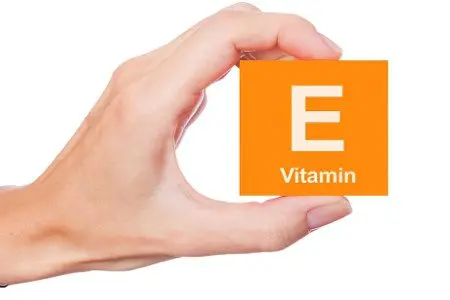
A fairly long study of the properties of tocopherol made it possible to draw conclusions about its exceptional benefits in terms of maintaining health, preventing a number of diseases and medicinal properties. The activity of vitamin E is explained by its pronounced antioxidant properties, the ability to influence inflammatory processes, activate the protective functions of the body and inhibit platelet aggregation.
It has now been proven that the use of vitamin E at a dosage of 200 IU daily helps prevent the development of cardiovascular, neurodegenerative diseases and some oncological pathologies.
Application in medicine
With Alzheimer’s. Alzheimer’s disease and epilepsy are affected by vitamin E. This happens by stimulating the transmission of neural impulses between brain neurons and nerve endings in different parts of the body.
Prevents the formation of blood clots. The antithrombotic effect of tocopherol is expressed in the suppression of blood coagulation processes. This greatly improves general circulation and local blood flow within the organs. Vitamin E prevents congestion in tissues, the formation of cholesterol deposits inside the vascular wall. Thus, we can say that tocopherol is an excellent prophylactic against atherosclerosis, hypertension, fragility of blood vessels, and heart disease.
Ataxia. The appearance of ataxia has long been associated with a lack of vitamin E in the body. When developing a treatment program, an increased dosage of tocopherol supplements is calculated. This is part of a standard protocol that has a positive effect on mobility.
In neuropathies. Vitamin E supplements are prescribed to prevent drug-induced peripheral neuropathy. Multiple studies have shown that tocopherol slows down the destruction of the myelin sheaths of nerve cells caused by long-term antiretroviral therapy in HIV infection.
Cataract. Vitamin E is essential for eye health. It promotes self-regeneration of the retina, cornea, iris. Experiments have shown that taking supplements with tocopherol ensures the transparency of the lens. In elderly patients, against the background of the use of vitamin preparations, a slowdown in cataract processes was noted.
Retinopathy. The use of vitamin E has a positive effect in the treatment of retinopathy of prematurity. In the case of pigmented retinin, the use of high doses of tocopherol is not recommended, as it can cause loss of vision.
With liver diseases. Liver pathologies cannot be cured or prevented by prescribing vitamin E. However, there is evidence that it slows down their development. So, studies have shown that high doses of vitamin E inhibit hepatocyte fibrosis in non-alcoholic pathologies, chronic hepatitis B. If the disease is caused by chronic alcohol intoxication, vitamin remedies do not have an effect.
Diseases for which vitamin E is effective
Pathology | Recommended dosage of vitamin E |
Alzheimer’s disease | It has a positive effect on memory processes, taking up to 2000 IU per day |
Beta thalassemia | 750 IU per day |
Dysmenorrhea | 200 IU twice a day, two days before the start, on the first three days of the cycle – 500 IU per day |
Infertility in men | 200 to 600 IU per day |
Rheumatoid arthritis | 600ME per day |
Solar burns | 1000ME + 2000mg vitamin S |
PMS | 400ME per day |
Why is vitamin E useful for women?

In gynecology, vitamin E has earned special respect due to its exceptional properties:
help in conception;
ensuring a normal pregnancy;
preservation of the youth of the female body;
ensuring full blood circulation in the uterus and ovaries;
participation in the synthesis of progesterone;
relief of menopausal symptoms;
elimination of fibrous tumors in the mammary glands;
ensuring the correct formation of the placenta;
regulation of hormonal balance.
Benefits for men
Physical endurance. Men need to get enough vitamin E daily to maintain physical endurance and maintain sexual activity. Tocopherol is able to increase overall tone, reduce the effects of oxidative reactions in muscle fibers after sports training. Active elements increase muscle tone, strengthen the vascular wall, and activate the overall blood flow.
Being the strongest antioxidant, tocopherol is capable of restoring cell membranes. It literally “flows” into the cell membrane, protecting it from the effects of free radicals. At the same time, phospholipids are preserved – special components that ensure cell regeneration.
Sex drive. Vitamin E has been proven to support sexual desire. This is due to the active blood supply to the genital organs, stimulation of the production of male hormones.
Used in cosmetics
Vitamin E for wrinkles. Vitamin E is included in almost all anti-aging care products, thanks to its ability to eliminate wrinkles, protect the skin from free radicals and sunlight. Penetrating into the deepest dermal layers, tocopherol ensures the formation and development of new cells.
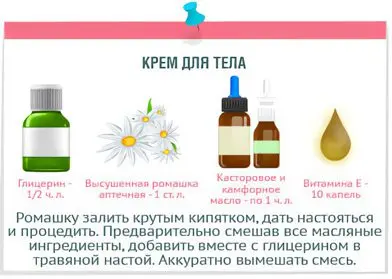
Hair masks with vitamin E – the easiest and most effective way to care. They nourish the hair follicles, improve local blood circulation. Oils with vitamin E can be rubbed into the scalp, applied along the entire length of the hair a couple of hours before shampooing. For complete care, 1-2 procedures per week are enough.
Masks with burdock oil and jojoba oil have pronounced nutritional properties. Dry hair recovers well from a mixture of olive, almond and burdock oils with a pharmacy solution of vitamin E. In case of hair loss, it is recommended to prepare a mask from honey, vitamin E in ampoules, aloe or potato juice. Mixing olive oil, burdock oil with a solution of vitamin E and egg yolk guarantees healthy shine and density to your hair.
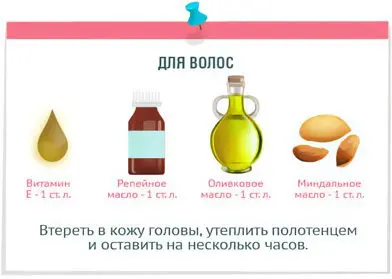
For nail health. To maintain healthy nails, you can use masks with vitamin E. When exfoliating nail platinum, rub a mixture of olive or sunflower oil with a few drops of iodine and pharmacy tocopherol. For accelerated growth, a mask with vitamin E, vegetable oil and a small amount of red pepper is useful. Cuticle softening is achieved by rubbing olive oil and vitamin E into the nail bed.
Does it help with scars? In 1999, a study published in the journal dermatology, refuted this, arguing that vitamin E did nothing to reduce the appearance of scars. What’s more, 33% of people who used it developed an allergic skin reaction known as contact dermatitis.
Interactions with other vitamins and minerals
Vitamin C is able to reconstruct the structure of oxidized tocopherol to a normal antioxidant form. High doses of vitamin C increase the body’s need for tocopherol. Vitamin E softens the side effects caused by an overdose of vitamin A. Tocopherol is necessary for the normal absorption of vitamin A, regulates its performance. Too high doses of vitamin A reduce the absorption of vitamin E.
Under the influence of vitamin E, vitamin B12 is transformed into its active form. Tocopherol alleviates signs of zinc deficiency, reduces the absorption of vitamin K. The combined action of vitamins E and A helps maintain a healthy intestine, reduces the risk of tumors, inflammation, and metabolic disorders.
The lack of selenium exacerbates the deficiency of tocopherol. Vitamin E is able to suppress the toxic properties of selenium. Inorganic iron negatively affects the absorption of vitamin E, so preparations with their content are taken at different times of the day.
What does a lack of vitamin E lead to?

As such, hypovitaminosis E is rare – most foods contain quite a lot of natural tocopherol. Its deficiency is most often observed in premature infants weighing less than 1500 g. Patients with pancreatitis, celiac disease, cystic fibrosis or long-term digestive disorders are also susceptible to vitamin E deficiency.
The first to suffer from vitamin E deficiency are muscle fibers, including the heart muscle – the myocardium. Muscular dystrophy develops, which eventually leads to the breakdown of muscle fibers, their death and replacement with calcifications. The liver reacts with the development of necrotic transformations, a decrease in glycogen. The patient is diagnosed with fatty hepatic degeneration.
From the side of the circulatory system, a short erythrocyte cycle is observed. In patients, regardless of gender, there are disorders of the nervous, reproductive, endocrine systems. Particularly affected by a lack of vitamin E is the thyroid gland.
Vitamin E deficiency symptoms:
Decreased concentration of attention.
Depressed state.
Chronic sleepiness.
Irritability.
Frequent headaches.
Poor skin condition.
metabolic disorders.
Prolonged lack of vitamin E provokes the development of a number of diseases:
Retinopathies.
Peripheral neuropathy.
Ataxia.
Immune suppression.
Skeletal myopathy.
Is overdose possible?
Vitamin E, contained in food, does not have toxic properties. As part of multivitamin complexes, its dose can range from 400 to 1000 IU, which cannot cause any side effects.
We can only talk about risk in patients who take vitamin E at a dosage above 1000 IU in combination with blood thinners. In this case, the occurrence of heavy bleeding is likely.
Indications for use
Hypovitaminosis.
Hard physical labor, intensive sports loads;
Recovery period after febrile conditions.
Muscular, joint diseases.
Elderly age.
Menopause.
Astheno-neurotic syndrome.
Primary muscular dystrophy.
Degenerative articular pathologies.
Secondary myopathy on the background of injuries, infections.
How to take vitamin E correctly?
When taking vitamin E, it is important to follow the dosage rules indicated in the instructions. The type of application, the size of the dose depends on the form of release of the drug, the diagnosis.
Standard doses of vitamin E for certain conditions:
I trimester of pregnancy – 100 mg per day.
Menstrual disorders – in the second half of the cycle, 400 mg every other day.
Rheumatoid arthritis – 300 mg per day for 2-3 weeks.
Hepatitis – to maintain liver function, take 300 mg of tocopherol for several months;
Psoriasis – 200 mg for 4 weeks.
Impotence – 200 mg per day for a month.
Vitamin E hypovitaminosis 0 100 mg once a day until symptoms disappear.
Lack of vitamin E, accompanied by muscle, nervous disorders, hepatitis – up to two months, 100 mg per day.
In the postoperative period – 100 mg per day for two weeks.
With excessive loads – 100 mg.
The appointment of vitamin E for therapeutic purposes is considered by the attending physician individually. The minimum course of taking a vitamin preparation can be 2-3 weeks. As part of complex therapy, taking tocopherol can be from 1 to 4 months. Prophylactic administration of vitamin E provides for a minimum dosage. For this purpose, the course can be repeated twice a year.
In pregnancy
Higher doses of tocopherol are used during pregnancy and the entire period of breastfeeding as prescribed by an obstetrician-gynecologist, pediatrician. Vitamin E is partially absorbed through the placental barrier. Approximately 20-30% of the active substance obtained penetrates through the mother’s plasma into the blood of the fetus. In breast milk, the analysis establishes a rather high concentration of vitamin E.
Can you take vitamin E with folic acid?
Tocopherol and vitamin B9 belong to different groups of vitamins. Despite this, they fit perfectly. The combination of these two substances is prescribed when planning conception. You need to start about 3 months before the expected date. Both partners should take vitamins during the entire preparatory period.
A gynecologist calculates the dosage of vitamin B9 and tocopherol for a woman. As a rule, vitamin E intake begins on the 14th day of the menstrual cycle and continues without interruption. If pregnancy occurs, vitamins are canceled for a man, and the expectant mother continues to receive them until the period of 14 weeks. The further expediency of using vitamin preparations is determined by the doctor leading the pregnancy.
How to increase the absorption and effectiveness of vitamin E?
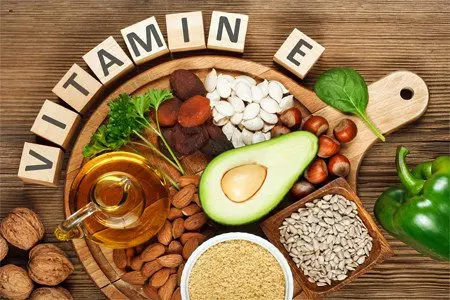
For the full absorption of vitamin E from food, the presence of fats, bile and food enzymes is necessary. If these conditions are not met, tocopherol is absorbed in a minimal amount, which can lead to the formation of a deficiency. Not absorbed tocopherol is excreted from the body through the urinary system (up to 10%) and intestines (up to 90%).
Experiments of scientists and nutritionists have shown that dressing salad with vegetable oil contributes to a more active absorption of all useful components, including tocopherol. Eating lettuce without vegetable fats has limited absorption of trace elements. Thus, we can conclude that oily types of salad dressings contribute to the active absorption of almost all fat-soluble vitamins. Beta-carotene and some carotenoids have similar qualities. This information is useful for those people who follow a vegetarian diet and use only vegetable oils. The exclusion from the diet of dairy products, meat, products containing fats leads to a deep deficiency of vitamin E and, as a result, to premature aging.
It is best to take vitamin E in combination with ascorbic acid. Vitamin C increases the activity of tocopherol. Under the action of ascorbic acid, the molecular structure of oxidized tocopherol is restored to active forms. The combined intake of vitamin E and selenium mutually enhances the properties of active substances.
Combined hormonal contraceptives inhibit the absorption of vitamin E in a woman’s body. About taking contraceptives, you should warn the doctor who prescribes a certain dosage of tocopherol.
How to keep it in products?
Tocopherol is extremely sensitive to the action of air and direct sunlight. When the temperature drops below 0°C, it loses its activity. When heated, its state remains stable up to 150-170°C. Practically unstable to the effects of alkaline and acidic environments.
To preserve the beneficial properties of vegetable oil, it should be added cold to salads as a dressing, without heating. Dishes with oil should be stored in a dark place, tightly closed with a lid. Direct sunlight and air molecules will cause the destruction of the molecular structure of vitamin E and the complete destruction of its active qualities.
Preservation, freezing of food in the freezer leads to the loss of almost half of the volume of vitamin E. To get as many useful substances as possible, it is best to eat fresh vegetables and fruits, salads – immediately after cooking.
Precautions and contraindications

Subject to the dosage prescribed by the attending physician, side effects from taking vitamin E do not occur. This does not happen if the patient takes tocopherol preparations on their own at a dose not exceeding 300 IU per day.
stroke risk increases with daily use of 300-800 IU of vitamin E. According to medical observations, the likelihood of hemorrhagic hemorrhage increases by 22%.
Blood clotting under the influence of vitamin E slows down. Tocopherol preparations are not prescribed to patients receiving blood-thinning agents – coumadin, vyrfarin, plavix, clopidogrel. If the patient is scheduled for surgery, he stops taking vitamin E in two weeks. This measure is preventive regarding the development of massive blood loss.
risk of prostate cancer. The likelihood of developing prostate cancer may increase in men taking high doses of vitamin E. Exceeding more than 400 IU of tocopherol is already a dangerous limit.
Iron-deficiency anemia. Synthetic vitamin E is able to completely destroy the structure of iron. If the patient must take iron and tocopherol preparations during one treatment course, the interval between them should be at least 7-8 hours.
In the course of one of the experiments, it was possible to find out that vitamin E can cause negative symptoms in women in the first months of pregnancy:
Nausea
Convulsive twitching in uterine region.
diarrhea.
Lethargy.
Rapid fatigue.
Headache.
Vision disorders.
Eruptions.
Subcutaneous hematomas.
Bleeding
Patients with myocardial infarction, a high probability of thromboembolism, severe cardiosclerosis should receive tocopherol preparations under the supervision of the attending physician.
Drug Interactions
Vitamin E inhibits platelet aggregation and is opposed to vitamin K-mediated clotting factors. This means that in patients taking anticoagulant, antiplatelet drugs, the likelihood of bleeding increases. The risk becomes even greater if the body receives a limited amount of vitamin K.
The effect of vitamin E on cholesterol-lowering agents has not been sufficiently studied. Often there is a suppression of their activity when taken simultaneously with vitamin C, beta-carotene and selenium.
If you are on any of the above groups and plan to start taking vitamin E, discuss the appropriateness and dosage with your healthcare provider.
[Video] Signs that your body lacks vitamin E and what to do?
Информация не являются руководством по лечению и диагностике, не заменяет консультации с врачём.
Автор статьи ↓









